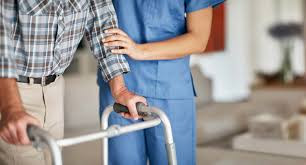Definisi
Tremor adalah gerakan abnormal pada anggota tubuh yang terjadi secara tidak normal, penderita biasanya tidak bisa mengendalikan gemetar yang dirasakan di bagian-bagian tubuhnya. Tremor terjadi lama dan biasanya muncul pada tangan, walaupun bisa memengaruhi lengan, kepala, pita suara, lidah, dan dagu. Tremor jarang terjadi di anggota gerak bagian bawah. Ada tremor yang muncul saat istirahat dan tidak terlalu terlihat saat aktivitas (resting tremor), ada juga tremor yang terlihat saat penderita mengangkat tangan melawan gravitasi (postural tremor).
Tremor serebelar atau intention tremor adalah kontraksi otot involunter yang terjadi saat penderita sedang melakukan gerakan yang memang ingin dilakukan, berasal dari adanya gangguan otak kecil. Pada intention tremor, gejala bisa ditemukan 50% di lengan, 27% di kaki, dan 9% di kepala. Kondisi ini disebabkan adanya kerusakan bagian otak serebelar yang sama dengan sisi pergerakan tremor. Tremor serebellar rentan dialami oleh orang yang mengidap beberapa penyakit seperti stroke atau tumor. Tremor itu sendiri tidak membahayakan, namun bisa menjadi hal yang memalukan dan mengganggu aktivitas serta kehidupan sehari-hari.
Penyebab
Tremor dapat terjadi akibat masalah pada area otak yang mengatur gerakan otot tubuh. Pada intention tremor, terjadi gangguan pada umpan balik serebelar di sistem saraf pusat dengan otot, sehingga terjadi tremor. Intention tremor diasosiasikan dengan kerusakan pada area sekitar traktus serebelar di batang otak dan talamus, serta di bagian pedunkulus serebelar. Degenerasi serebelar juga ditemukan pada penderita dengan penyalahgunaan alkohol. Pada pasien yang alkoholik, terdapat kerusakan pada sel-sel di serebelar seperti sel Purkinje.
Penyakit-penyakit pada serebelar yang juga disertai tremor antara lain:
- Ataksia spinoserebelar
- Fragile X-associated tremor
- Serebelitis akut
- Tumor atau cedera pada otak yang mengenai serebelar
- Degenerasi serebelar paraneoplastik
- Gejala sekunder stroke
Selain penyakit di atas, tremor juga dapat disebabkan oleh kondisi tertentu seperti multiple sclerosis, gagal hati atau ginjal, penyakit yang berkaitan dengan fungsi saraf seperti penyakit Parkinson, hipertiroid serta hipoglikemia.
Beberapa jenis obat yang digunakan dalam jangka panjang juga bisa menyebabkan tremor. Obat-obatan tersebut meliputi amfetamin, kortikosteroid, obat-obatan untuk gangguan kejiwaan, dan obat seperti anti kejang (fenitoin dan karbamazepin). Mengonsumsi kafein berlebih dan keracunan merkuri juga dapat menyebabkan tremor. Penyakit vaskular seperti infark serebelar, penyakit autoimun, gejala metabolik seperti degenerasi hepatoserebral juga dapat menimbulkan tremor. Semua hal di atas adalah underlying factors yang dapat menyebabkan munculnya tremor.
Faktor Risiko
Beberapa faktor risiko yang dapat memengaruhi tremor adalah faktor usia, dan faktor keturunan atau mutasi genetik. Konsumsi alkohol dan kafein berlebihan juga dapat meningkatkan risiko munculnya tremor. Berkendaralah secara aman dan gunakan pelindung kepala, untuk menghindari terjadinya trauma kepala yang dapat memengaruhi serebelar. Penggunaan obat anti kejang juga bisa meningkatkan risiko munculnya tremor.
Pada tremor yang disebabkan oleh serebelitis akut, walaupun penyebab pastinya tidak diketahui, biasanya penyakit ini terjadi karena infeksi virus, contohnya akibat rotavirus, virus Epstein-Barr, virus varisela zoster, virus herpes simpleks, dan HIV. Infeksi bakteri walaupun jarang, juga pernah dilaporkan sebagai penyebab serebelitis.
Gejala
Semua tremor yang disebabkan oleh adanya penyakit di serebelar, tidak semuanya muncul sebagai intention tremor. Bahkan semua tremor yang muncul akibat penyakit di area serebelar tidak muncul dengan sifat gejala yang sama. Seperti beragam jenis tremor yang dijelaskan di atas yaitu postural tremor dan resting tremor.
Pasien dengan tremor biasanya mengeluhkan kesulitan dalam aktivitas sehari-hari, seperti minum dengan cangkir atau mengambil peralatan makan. Tremor juga membuat penderitanya mengalami masalah dalam pergerakan.
Gejala lain yang berkaitan dengan serebellar yaitu:
- Nistagmus (sulit mengendalikan gerakan cepat pada mata) dan gangguan dalam koordinasi mata terhadap benda
- Dismetria (ketidakmampuan memperkirakan kecepatan atau jarak suatu benda)
- Disdiadokokinesia (ketidakmampuan melakukan sesuatu dengan cepat, termasuk gerakan berlawanan)
- Hipotonia (tonus otot yang melemah)
- Ataksia (kesulitan mengendalikan gerakan tubuh, ditandai dengan gaya berjalan yang tidak wajar)
Diagnosis
Diagnosis tremor serebellar dapat ditegakkan melalui wawancara mendalam (anamnesis) mengenai gejala yang dialami serta riwayat penyakit pasien, pemeriksaan fisik, dan pemeriksaan penunjang. Pemeriksaan fisik yang biasa dilakukan untuk mendeteksi gangguan pada serebellar yaitu:
- Tes jari ke hidung dan tumit ke tulang kering, pasien akan diminta melakukannya dengan cepat
- Tes gerakan jari halus (fine finger movement) dilakukan untuk melihat koordinasi dan kecepatan dalam melakukan tes nya. Tes dapat berupa mengancingkan/membuka kancing baju, mengambil objek seperti cangkir atau pensil. Tremor akan meningkat ketika anggota tubuh kita berusaha meraih objek
- Hentakan tremor akan berkurang ketika mata ditutup
- Untuk mendeteksi disdiadokokinesia, dapat dilakukan tes membalikan kedua telapak tangan secara berlawanan arah
- Untuk mendeteksi ataksia dapat dilakukan tes berjalan yaitu tes berjalan tandem dan tes Romberg
- Tergantung dari etiologi penyebab tremor, pasien mungkin memiliki peningkatan refleks fisiologis saraf dan terdapat refleks patologis (refleks yang seharusnya tidak ada pada orang yang sehat, ditemukan pada pasien).
Pada pemeriksaan fisik ini, pasien akan dilihat apakah terdapat gerakan otot involunter atau tremor saat melaksanakan hal-hal di atas. Selain pemeriksaan fisik, pemeriksaan penunjang juga dapat dilakukan untuk membantu menegakkan diagnosis tremor serebellar. Pemeriksaan tersebut adalah pencitraan seperti MRI (Magnetic Resonance Imaging) yang merupakan baku emas untuk mengevaluasi otak dan serebelar.
Tata Laksana
Pengobatan tremor tergantung pada penyakit penyebab yang mendasarinya. Beberapa pilihan metode pengobatan tremor antara lain:
- Obat-obatan
Obat-obatan yang dapat digunakan untuk mengatasi tremor antara lain penghambat beta seperti propranolol, atenolol dan metoprolol. Obat anti kejang diberikan apabila penghambat beta tidak efektif untuk mengatasi tremor, contohnya adalah primidone dan gabapentin, obat sedatif benzodiazepine, obat Parkinson (levodopa dan karbidopa), serta injeksi toksin botullinum.
- Terapi USG terfokus
Operasi Terapi USG terfokus dilakukan menggunakan gelombang ultrasonografi dengan panduan hasil pencitraan MRI. Tujuannya adalah untuk mengecilkan lesi di area otak yang dianggap sebagai penyebab munculnya tremor.
- Operasi
Prosedur ini dilakukan ketika kondisi penderita tidak membaik setelah terapi obat-obatan atau mengalami tremor parah. Selain obat-obatan, USG dan operasi, dapat pula dilakukan terapi fisik seperti fisioterapi cara jalan, vibrasi tendon, teknik posisi tubuh dapat dilakukan untuk memulihkan fungsi tubuh.
Komplikasi
Jika penyebab yang mendasari tremor tidak segera diatasi, tremor dapat mengganggu aktivitas sehari-hari pasien dan dapat meningkatkan stress, depresi pada pasien. Pada sisi baiknya, belum ditemukan komplikasi yang mengancam jiwa akibat tremor serebellar. Namun, bila penyakit yang mendasarinya tidak diatasi, penyakit itulah yang mungkin dapat menyebabkan timbulnya komplikasi lain.
Pencegahan
Untuk mencegah tremor bertambah berat, hindari stress dan kecemasan yang dapat memperparah tremor, melakukan olahraga ringan untuk memperkuat otot, mengurangi konsumsi minuman yang mengandung kafein dan memperbanyak konsumsi air mineral. Tidur dan beristirahat yang cukup, sebab kelelahan bisa memicu timbulnya tremor.
Kapan harus ke dokter
Disarankan untuk segera ke dokter apabila mengalami tremor tiba-tiba atau tremor yang dialami semakin buruk dan sering terjadi.
Mau tahu informasi seputar penyakit lainnya? Cek di sini, ya!
- dr Hanifa Rahma
Cabrero F, De Jesus O (2021). Intention Tremor. NCBI Statpearls. Available from: https://www.ncbi.nlm.nih.gov/books/NBK560642/
Lenka A, Louis E (2018). Revisiting the Clinical Phenomenology of "Cerebellar Tremor": Beyond the Intention Tremor. The Cerebellum. Available from: https://link.springer.com/article/10.1007/s12311-018-0994-6
WebMD Staff (2020). The Brain and Essential Tremor. Available from: https://www.webmd.com/brain/essential-tremor-basics
Shiel W (2019). Tremors: Symptoms & Signs. Available from: https://www.medicinenet.com/tremor/symptoms.htm
National Institute of Health (2021). National Institute of Neurological Disorders and Stroke. Tremor. Available from: https://www.ninds.nih.gov/Disorders/Patient-Caregiver-Education/Fact-Sheets/Tremor-Fact-Sheet












